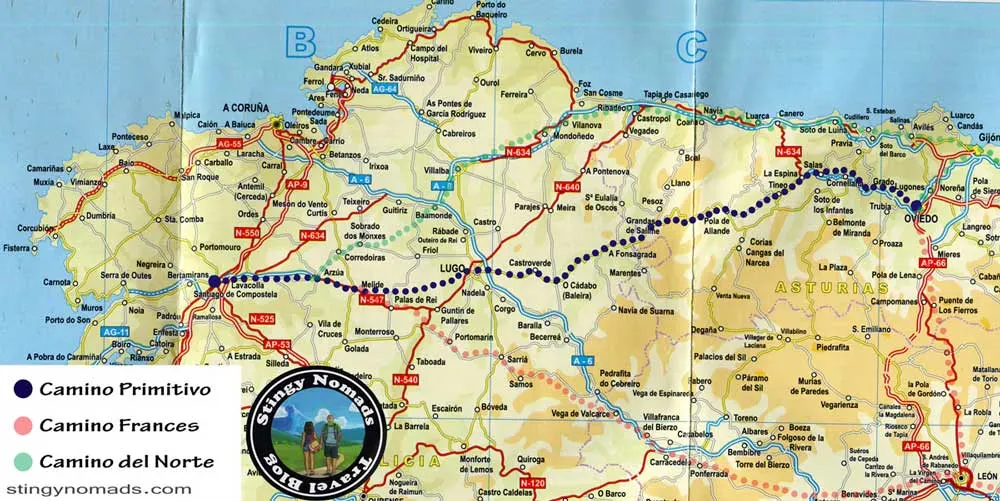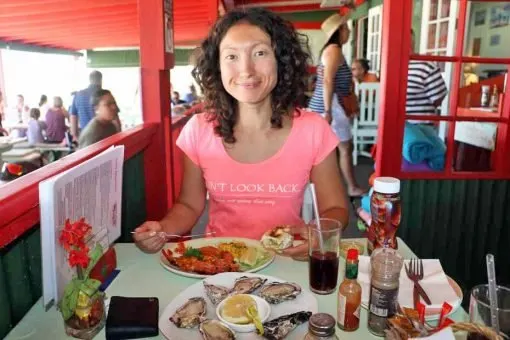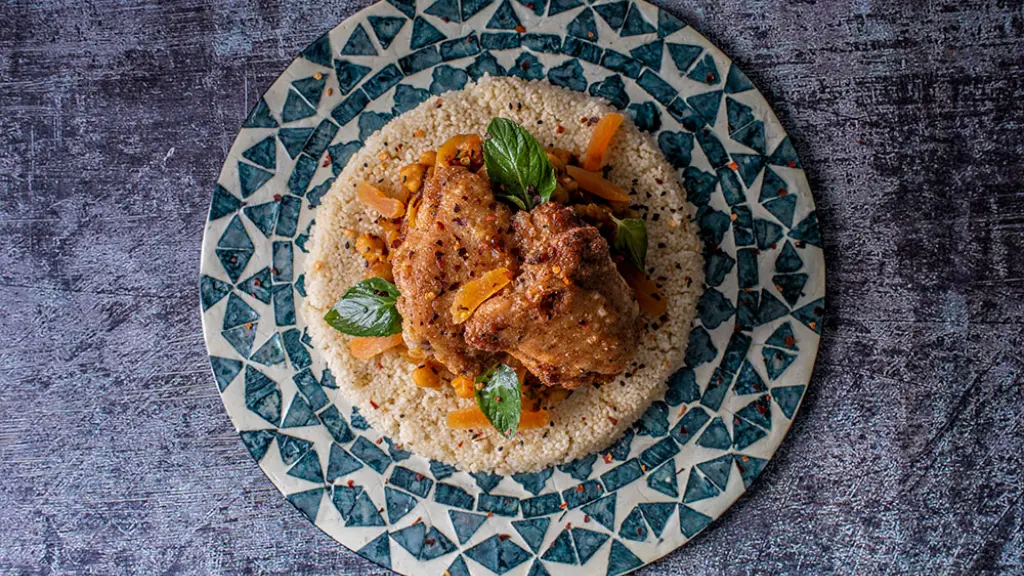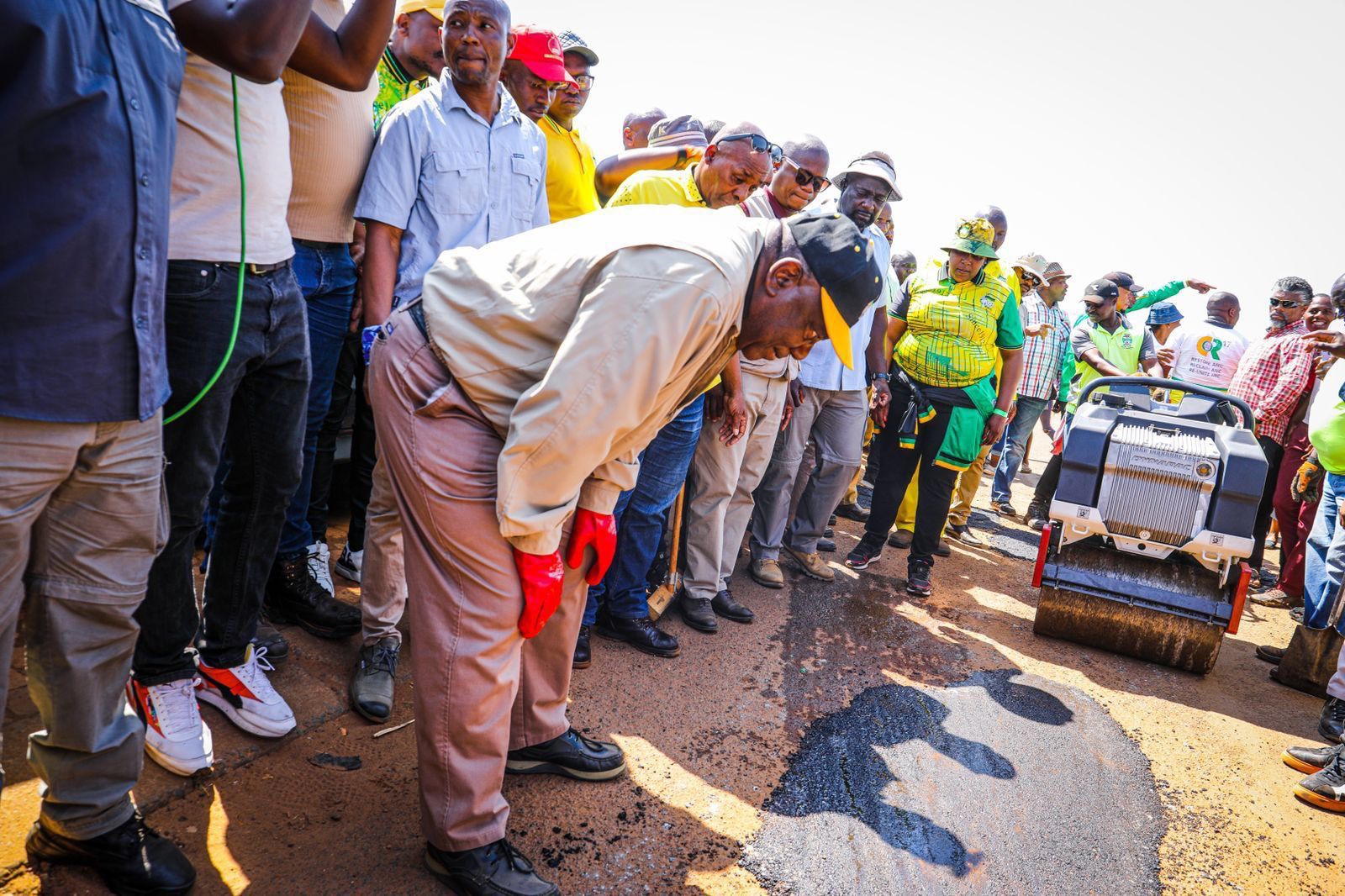The Camino Primitivo or the Original Way is a part of the Northern Camino de Santiago network that includes Camino Primitivo, Camino del Norte (the Northern Way), and Camino Ingles (the English Way).
The total distance of the Camino Primitivo is 321 km/200 mi it can be completed in two weeks. The trail starts at the cathedral of Oviedo and finishes at the cathedral in Santiago de Compostela. It’s considered to be the toughest Camino de Santiago route due to its many steep ascents and descents. The route passes through two Spanish provinces – Asturias and Galicia and offers a great in-nature experience combined with good infrastructure.

Table of Contents
Camino Primitivo downloadable PDFs
To make your planning and walking easier we’ve created two free downloadable PDFs for the Camino Primitivo.
Camino Primitivo route overview
- Distance – 321 km/200 mi
- Number of days required – 12-14
- Starting point – Oviedo, Asturias
- Finishing point – Santiago de Compostela, Galicia
- Average cost – 25-35 Euro per person per day on average
- Accommodation – public and private albergues, hotels, guesthouses
The Camino Primitivo can be combined with the Camino del Norte and the French Camino. Both Caminos have connection routes to Oviedo where the Original Way starts. The Camino de San Salvador is a connecting route from León (the French Way) to Oviedo. On the Camino del Norte, there is a route split just before Gijón that goes to Oviedo.
How long does it take to walk the Camino Primitivo?
It takes on average 12 to 14 days to complete the Camino Primitivo from Oviedo to Santiago de Compostela. It can be done over a shorter or longer period depending on how much time you have and how far you want to walk every day.
History of the Camino Primitivo
The name “Primitivo” refers to its origin as the first Camino de Santiago ever walked. The history of the Camino de Santiago dates back to the 9th century when Spanish King Alfonso II walked to Santiago de Compostela. According to the legend, he completed the Camino to commemorate the discovery of the remains of apostle St. James in Compostela several years earlier. At that time most of the Spanish territory was under Moorish control, and only the Northern part of Spain remained independent.
Travel insurance for the walk
You can read more details about travel insurance for the Camino or get a personalized instant insurance quote for your Camino Primitivo trip right now!
World Nomads travel insurance has been designed by travelers for travelers, with coverage for more than 150 activities as well as emergency medical, lost luggage, trip cancellation and more.


When is the best time for walking?
Summer is the best time to do the Camino. It’s warm with fewer rainfalls though in the mountains the weather is unpredictable and changes quickly. July and August are the busiest months for this Camino with the best weather conditions. We walked this route end of May – beginning of June and got a lot of rain. Locals told us it wasn’t normal for that time of the year.
Shoulder season May – June and September can be good times for walking the weather is good and there aren’t many people. We wouldn’t recommend walking the Camino Primitivo off-season from November to March as many albergues are closed for this period plus it’s cold and snowing.




What is the accommodation like?
There are special hostels for pilgrims on the Camino called “albergues“. Albergues can be municipal and private. You can’t book municipal (public) albergues, it works on a first come first serve system. Private albergues can be booked in advance through online booking services or over the phone.
Most municipal albergues on the Camino Primitivo cost around 10 Euro pp.
Private albergues have usually better facilities, are more comfortable and modern, and the price is around 17-20 Euros.
Municipal albergues don’t have lockers we’d advise having a small bag to carry your valuable stuff with.
In the high season, most municipal albergues allow you to stay only one night, they can make an exception if you get sick, etc.
Municipal albergues usually don’t allow backpack delivery. If you use the service you’ll have to stay in private albergues/hotels.
Most albergues have washing and drying machines.
You can find more information on accommodation on the Camino in our post Albergues on the Camino de Santiago.
Luggage transfer
You can use a backpack delivery service on the Camino Primitivo. They pick up your backpack at your albergue/hotel in the morning and drop it off at your next accommodation place by lunchtime. When you arrive your backpack is waiting for you. The average price is 8 Euros per backpack per stage.
Several companies offer a luggage delivery service on the Camino Primitivo. Correos and Pilbeo are the two most popular companies. The entire route (Oviedo to Santiago) works out 100 euros per backpack.
More posts on the Camino de Santiago you can find HERE.
Camino Primitivo cost
If you stay in municipal albergues and buy food in supermarkets you can budget 25 Euros per person per day. If you stay in private albergues, have lunch in a restaurant, stop for coffee or have a beer prepare to spend between 30 to 35 Euro pp. per day. If you stay in private rooms and eat out at least once a day budget from 50 euros per person per day.
- Accommodation – municipal albergues – 10 Euro pp., private albergues/hostels 17-20 Euro.
- A meal in a restaurant (Menu del Dia) – 10-12 Euro pp.
- Food shopping – 6-8 Euro pp. per day.
- A cup of coffee – 2 euros.
- A beer in a bar – 2 Euros.
- Backpack delivery service – 8 Euros per backpack per stage.
- Laundry – washing – 3 Euro per load; drying – 3 Euro per load.
We have a comprehensive post on the cost of walking the Camino de Santiago where you can find everything you need for planning your Camino budget.
What to pack for the Camino?
don’t pack too much for the Camino. Remember you’ll have to carry the backpack for weeks unless you’re planning to use a luggage delivery service. Our backpacks were 6-7kg each but we had a laptop and a big camera. You can lower the weight of your backpack down to 5kg.
Two important items to bring are comfortable shoes to walk the Camino and a good Camino backpack. You can find more tips on what to pack for the walk in our detailed Camino packing post.
How to get to the Camino Primitivo?
If you come from overseas the easiest way of getting to Oviedo is to fly to Madrid. Many airlines offer direct flights to Barajas Airport in Madrid from all over the world. From Madrid, you can take a direct bus to Oviedo. There are many daily buses from Madrid including direct buses Barajas Airport to Oviedo. The prices vary between 20 and 40 euros (sometimes you can find special deals on their website for 6-8 euros). The travel time is 5 to 6 hours. You can find the up-to-date itinerary and prices on the ALSA website. There are direct buses to Oviedo from other Spanish cities.
You can get from Madrid to Oviedo by direct train. It takes 4h30min. The price is between 25 and 50 euros. You can get a train from Barcelona. It takes 7-8 hours with a connection.
The bus and the train station in Oviedo are in the same place, about 20 min. walk to the Cathedral.
Oviedo the beginning of the route
The Camino Primitivo starts at the Cathedral of Oviedo. Oviedo is a beautiful city with typical cobblestone streets, a charming historical center, and many restaurants, and bars. It’s easy to get here by bus or train from different cities in Spain.
Places to stay in Oviedo
There are plenty of places to stay in Oviedo from a municipal albergue to spa hotels.
Where to get the Credential in Oviedo?
There are a couple of places in Oviedo where you can buy a Credential. The price is 3 euros.
- at the Tourism Information Office, Plaza de Institution, 4
- at the Municipal albergue El Salvador, Leopoldo Alas Street, 20
- at the Cathedral of Oviedo, Plaza Alfonso II El Castro


Camino Primitivo walking stages
Day 1. Oviedo – Grado, 25 km/15,5 mi
San Lazaro – La Bolguina – El Escamplero – Paladin – L’Arche – Grado
It’s important to start walking early to have enough time for several lunch and rest breaks along the way. The first day is always difficult on any Camino. This stage is quite challenging due to several steep ascents and descents.
You can split the first day on the Camino Primitivo into two; walk from Oviedo to El Escamplero, 12 km, and the next day from El Escamplero to Grado, 13 km. It’s a good option if you don’t want to spend a night in Oviedo and rather start walking the same day you arrive.
Our first day was very challenging due to heavy rain that continued all morning. The Camino Primitiv route starts at the cathedral of Oviedo and then goes through the city into the hills.
Highlights of the day
- Oviedo Cathedral and the historical center.
- Pastoral scenery; green hills, small villages, cows and sheep walking around.
- Beautiful mountain scenery.
- The historical center of Grado and the Sunday market.
Challenges
- Several ascents and descents on the Camino
Grado
A big town with many churches, a nice historic center, many shops, etc. If you’re in the city on Sunday you’ll walk through a big local market where you can buy delicious local cheeses, ham, salami, and bread.
- ATM – yes, many on the way
- Shops – yes, many supermarkets on the way, most open on Sundays.
- Restaurants, cafes – many on the way.
Places to stay in Grado*
*A complete list of accommodations on the Camino you can find in our downloadable PDF file.


Day 2. Grado to Salas, 24 km/15 mi
Grado – Villapañada – La Doriga – Cornellana – Casazorrina – Salas.
A beautiful walk through the mountains and small villages, we left early in the morning and all the food places were still closed, we walked all the way to before we could have some food and coffee. There is a long uphill after Grado. It was quite a muddy day, mostly walking through the forest on the path but due to heavy rains, it was very dirty and wet so good waterproof shoes are essential.
Highlights
- Beautiful scenery.
- A couple of old small villages/towns.
Challenges
- Muddy path
- Many up and down-hills
Salas
A nice town with a beautiful church and picturesque scenery.
- ATM – yes, several.
- Shops – yes, one quite big supermarket and a couple of smaller shops.
- Restaurants – yes, several, some closed on Mondays.
Places to stay in Salas


Day 3. Salas to Tineo, 20 km/12,4 mi
Salas – Bodenaya – La Espina – Tineo.
A nice walking day with quite a bit of uphill walking, a couple of pilgrim’s rest stops; a place with coffee and snack vending machines, toilets, tables, and chairs. The first place to stop for coffee is La Espina, 9km away.
Highlights
- Waterfall, about 2km from Salas, 250m down-hill detour
- Forest walk
Challenges
- Muddy path
- Long uphill in the beginning
Tineo
Quite a big town with a beautiful view of the valley and the mountains.
- ATM – yes
- Supermarkets – yes
- Restaurants, bars, cafes – yes
Places to stay in Tineo
Day 4. Tineo to Pola de Allande, 28 km/17,3 mi
Tieno – Campiello – Borres – Porciles – Pola de Allande.
A long and tiring day I’d recommend starting early. On the way from the albergue, there is a bakery that opens at 6 am you can buy fresh bread there. The next place to stop for coffee or lunch is Campiello, 14km away.
As an option you can break this day on the Camino Primitivo into two; stay in Campiello (there are two private albergues there, both have restaurants, and one has a grocery shop), and continue the next day to Pola de Allande, 15km. It’s a good option if you feel tired, don’t push yourself rather walk a short day and rest more. There is a municipal albergue in Borres 17km but it’s more than basic and there are no shops, only one bar.
Highlights
- Beautiful morning view of Tineo from the top of the hill.
Challenges
- Many smallish up-hills
- A muddy trail along cow pasture fields
- Long and steep down-hill, 300m, to Pola de Allande
Pola de Allande
A small and cozy town surrounded by mountains.
- ATM – yes
- Supermarket – yes, closed from 2 pm to 4.30pm
- Restaurants, bars, cafés – yes
Places to stay in Pola de Allande


Day 5. Pola de Allande to La Mesa, 23 km/14,2 mi
Pola de Allande – Puerto del Palo – Montefurado – Lago – Barducedo – A Mesa.
From the beginning of the day you start walking uphill, the most difficult walking day on the Camino Primitivo. The trail goes through the mountains for a while there will be no place to stop for a cup of coffee or lunch, the nearest place is Berducedo, 19km away. We’d suggest having breakfast in Pola there are several cafés on the way that serves breakfast from 6 am.
If you feel very tired after a long steep uphill you can stay in Barduceda, 18km from Pola, there are two albergues; one municipal and one private, a couple of bars, and a small shop. By the way, the municipal albergue in A Mesa is one of the worst on the Camino the one in Berducedo is better.
Highlights
- Stunning view over the mountains
- Montefurado – a tiny village on the top of the hill with old rock houses and walls, only one resident and many cows.
Challenges
- Very long and steep up-hill, 600m in the first half
- Strong wind and mist on the top, prepare rain-jacket
La Mesa
There is nothing here except for two albergues and a restaurant, it’s not a town or village if you want to buy some food do it in Barducedo.
- ATM – no
- Supermarket – no
- Restaurant – yes
Places to stay in La Mesa


Alternative route from Tineo to La Mesa through Hospitales, 46 km/28,5 mi, 2 days
There is an optional route on the Camino Primitivo through Hospitales. The total distance to A Mesa will be a bit shorter, the trail goes up through the mountains. It’s worth taking this route only if the weather is good otherwise it will be cloudy, and windy and you won’t see anything. The trail splits on the second day at La Mortera, on the first day you still walk on the main route, and joins again on the second day at Puerto del Palo.
Day 4. Tineo to Borres, 18 km/11 mi
Borres is a tiny village with an albergue and a bar, but no shop. Keep in mind the albergue in Borres is very basic and doesn’t have a kitchen but you can get food and coffee in the bar.
Day 5. Borres to La Mesa, 28km/optional Barducedo, 26 km/16 mi
From Borres you walk for 15km through the wild without anything or anybody after that the trail joins the main route at Puerto del Palo from where it’s 13km to A Mesa. On a clear day, you’ll be able to enjoy stunning mountainous scenery.
Day 6. La Mesa to Grandas de Salime, 17 km/10,5 mi
La Mesa – Embalse de Salime – Grandas de Salime.
It was the day with the most beautiful scenery, one long downhill, most of the day slightly uphill. We’d suggest having breakfast in La Mesa there is no place to stop on the way except one restaurant 4km before Salime.
Highlights
- Tiny rocky chapel, after the first up-hill from La Mesa, the smallest and cutest chapel we’ve ever seen
- Stunning view over Embalse de Salime (water reservoir) on the way down to the dam. The most impressive water body on the Camino Primitivo.
- A balcony/viewpoint at the dam on the right-hand side of the road (walk through the door).
- Anthropology museum in Grandas de Salime, 1,5 euro entrance fee.
Challenges
- Steep and long down-hill to the dam
- Some road walk along the dam but the road is not busy
Grandas de Salime
A nice town, we were quite happy we decided to stay and not to walk on. There are two albergues here, one municipal and one private, and a couple of pensions.
- ATM – yes. Don’t use Telebanco, it charges a 5 euro commission.
- Supermarket – yes
- Restaurants – yes


Day 7. Grandas de Salime to A Fonsagrada, 28 km/17,3 mi
Grandas de Salime – Cereixeira – Castro – Venta del Acebo – Barbeitos – A Fonsagrada.
A nice day of walking with some up-hills, a forest walk, and a few muddy roads. The day went quite fast for us it didn’t feel like we walked 26km. Today you leave Asturias and enter a different province – Galicia, there will be a sign indicating it.
Highlights
- It was so cloudy and misty that we didn’t see much.
- Saw a dear and a genet in the forest.
Challenges
- Some road walk but the roads were not busy we saw a car every once in a while
- Very steep uphill right at the end all the way to A Fonsagrada.
A Fonsagrada
A nice and quite big town with several albergues, hostels, and pensions. A good place to aim for in high season as there are many accommodation options. Attention! The municipal albergue used to be in Padron, 2km away from the town but it was moved now it is in A Fonsagrada next to the church.
- ATM – yes.
- Supermarkets – yes
- Restaurants, bars – yes
Places to stay in A Fonsagrada
Day 8. A Fonsagrada to O Cadavo Baleira, 25 km/15,5 mi
A Fonsagrada – Padron – Paradavella – A Lastra – Fontaneira – O Cadavo Baleira.
Weather-wise it was one of the worst days on our Camino, it rained from early morning, and we were wet, cold, and miserable.
Challenges
- One long down-hill
- Many uphills that sometimes were quite steep
O Cadavo Baleira
A small town with three albergues, one municipal and two private. There are shops but they all are closed on Sundays you have to bring food with you from A Fonsagrada or eat in one of the restaurants. There are a couple of bars a bit further away from the albergue that give you tapas for free if you order drinks.
- ATM – yes.
- Shop – yes
- Restaurants, bars – yes
Places to stay in O Cadavo Baleira
Day 9. O Cadavo Baleira to Lugo, 30 km/18,6 mi
Vilabade – Castroverde – Vilar de Cas – Gondar – Castelo – Lugo.
We’d suggest starting the day early in order to have more time in Lugo, it’s a nice city with a lot to see. The municipal albergue in Lugo has only 40 beds so if you arrive late you might not get a spot but there are many private albergues and hostels there. You can get breakfast and coffee at Vilabade there is a food kiosk there, and people who run it will open a local church for you, and tell you a little bit about the Camino Primitivo (if you understand Spanish).
Highlights
- The umbrella fountain in front of the church in Castroverde looks amazing if it rains.
- The historical town of Lugo; has impressive huge Roman walls, a Gothic cathedral, and cobblestone streets.
- Calle de Los Vinos in Lugo (street near the cathedral), don’t miss it, especially over weekends, there are several bars where if you order drinks you get free tapas, small beer 1,20 Euro, big – 2 Euro.
- Bakery Meson de Crecente in Lugo is across the road from Puerta de San Pedro.
Challenges
- Long distance, 30km, relatively flat with one uphill in the beginning.
- A little bit of walking on the road but most of the time there were no cars.
Lugo
A big city with a beautiful historical center behind the old Roman walls; cobblestone streets, a cathedral, churches, museums, etc. Some of our Camino friends, who arrived too tired for walking around the city, stayed here for two days to have a chance to see it. Remember, you’re not allowed to stay for two nights in the municipal albergue but private albergues won’t mind.
- ATMs – yes.
- Supermarkets – yes. The next day there will be no shops on the way if you want to buy something buy it in Lugo.
- Restaurants, bars – yes
Places to stay in Lugo
Day 10. Lugo to San Romao da Retorta (Castrelo), 20 km/12,4 mi
Lugo – San Lazaro – San Vicenzo do Burgo – San Romao da Retorta/Castrelo.
It would have been an easy walking day and we were planning to walk further to the next place but it rained very hard, we were completely wet and decided to stop at San Roman da Retorta. As an option to make your next day shorter you can walk 5km more and stop at A Covela (there is only one private albergue there).
Highlights
- Nice view of Lugo and the Old Roman bridge from the outskirts of the city.
- A beautiful walk through the forest.
Challenges
- A half of the day walking on the road though not very busy.
San Roman da Retorta (Castrelo)
Both places are the same village, there is nothing here except for one municipal and one private albergue with a restaurant.
Places to stay in San Romao
| Municipal albergue, 8 euro | Casa Castrelo |


Day 11. San Romao da Retorta/Castrelo to Melide, 28 km/17,3 mi
Ferreira (O Carballal) – As Seixas – Casacamino – Irago de Arriba – Melide.
Last day of walking without crowds of pilgrims on the trails. There are several restaurants on the way where you can stop for lunch or coffee.
Highlights
- Some parts of the trail through the forest. To be honest, the last three days of the Camino Primitivo are less impressive than the first part.
Challenges
- Some uphill walking though not steep or long.
Melide
The Camino Primitivo merges with the Camino Frances in Melide. For the last two days, you walk on the French Camino. When you reach the city don’t be surprised there will be hundreds of pilgrims there. The last part of the French Way from Sarria is the most popular Camino route. No need to worry about accommodation, there are many albergues, including one municipal for 120 people. The town is famous for pulperias – restaurants where you can eat pulpo (octopus cooked with spices).
- ATMs – yes.
- Supermarkets – yes
- Restaurants, bars – yes
Places to stay in Melide
Day 12. Melide to O Pedrouzo, 33 km/20,5 mi
Melide – Boente – A Fraga Alta – Ribadiso da Baixo – Arzua – Calle – Salceda – Mojon – O Empalme – Santa Irene – A Rua – O Pedrouzo.
After the quiet Camino Primitivo, you start walking on the French Camino with hundreds if not thousands of other pilgrims. There are many coffee shops, restaurants, albergues on the way, every 5km at least. To get from the Camino Primitivo to the French Way was like coming out of a quiet forest right in the middle of a big and busy city.
Challenges
- Quite a bit of walking along the road
- Hundreds of pilgrims on the route, especially after Arzua
- Distance, 33km – the longest day on the Camino
O Pedrouzo
Don’t know if this place would exist without the Camino, the town is only one street with many albergues, restaurants, cafes, etc. There are several private albergues/hostels and hotels as well as one municipal albergue. We didn’t stay here we decided to challenge ourselves and walked to Santiago in one day, 53km. It was tough but we made it by 6 pm and were quite happy to be finished one day earlier and have more time to explore Santiago.
- ATMs – yes.
- Supermarkets – yes
- Restaurants, bars – yes
Places to stay in O Pedrouzo
| Albergue O Trisquel | Pension Maruja | Pension 23 | Pension Diana | Pension 9 de Abril |
Day 13. O Pedrouzo to Santiago de Compostela, 20 km/12,4 mi
O Pedrouzo – San Paio – Lavacolla – Monte do Gozo – Santiago de Compostela.
On the last day on the Camino Primitivo, we’d suggest starting early if you want to make it to the Pilgrim Mass at 12 pm (there is a Pilgrim Mass at 7.30pm as well). Remember you’re not allowed to enter the cathedral with a backpack you can either leave it in your albergue or at the Pilgrim’s Reception Office, 100m from the cathedral.
The easiest option is to stay in one of the albergues on the way to the cathedral you can just drop your backpack there and continue walking as we did.
Highlights
- Stunning forest right after O Pedrouzo.
Challenges
- The last 10km of the walk are not well marked, no distances, and you basically follow the crowd.
The Camino Primitivo offers beautiful forest and mountain scenery. If you’d like to add some sea views to complete the picture we can recommend a 3-4-day walk from Santiago de Compostela to Finisterre – “the end of the world”. If you don’t feel like walking anymore but still would like to visit Finisterre and Muxia capes you can do a day bus tour from Santiago.


Santiago de Compostela the end of the Camino Primitivo
There are many great things to do in Santiago de Compostela to keep you busy for a couple of days from going out for wine and tapas to visiting museums and doing day trips to the coast.
There are many great places to stay in Santiago de Compostela from albergues to luxury hotels and spas.
Places to stay in Santiago de Compostela
Tours and activities in Santiago de Compostela
If you have a couple of days in Santiago you can spend some time exploring the city and its surroundings.
Getting the Compostela in Santiago
To get the Compostela (the accreditation of pilgrimage to the Tomb of St.James) go to the Pilgrim’s Reception Office in Santiago. The best way is to arrive there before 8 am (opening time) and stand in a queue, some people do it the next day after they arrive in Santiago. If you arrive there later in the day you might spend waiting between 1 and 3 hours depending on the season.
To get Compostela certificate you must show your Credential with stamps that confirm that you’ve walked at least the last 100km to Santiago de Compostela. To get your Compostela you need to get two stamps per day for the last 100 km to Santiago de Compostela. The certificate costs 5 Euros.
Botafumeiro ceremony in the Cathedral of Santiago
It’s hold only on special religious celebrations such as
- The Epiphany: 6th January
- Easter Sunday
- The Ascension of the Lord
- The Appearance of the Apostle-Clavijo: 23rd May
- Pentecost
- The Martyrdom of St. James: 25th July
- Mary’s Assumption: 15th August
- All Saints: 1st November
- Christ the King
- Immaculate Conception: 8th December
- Christmas: 25th December
To see it outside of the above-mentioned days people have to pay for it. You can share the cost between as many people as you want or you may be lucky and somebody arranges it for the day you’re there. It’s necessary to book it beforehand.
I’ve seen the ceremony only once and it was truly impressive, something to experience. Remember no photos or videos are allowed during the Mass even if you pay for Botafumeiro.
Final thoughts about the Camino Primitivo
It was our second Camino de Santiago, we finished the Camino Portuguese two days before we started the Primitivo, and I must say these are two completely different experiences. We both love hiking in the mountains and the Camino Primitivo is as close as you can get to it on any Camino de Santiago, with no big cities and busy roads, more countryside, mountains, and forest.
Though it felt quite wild and untouched there is enough infrastructure to make your walk pleasant; different accommodation and food options, easy to find a place to stop for coffee and lunch in the middle of the day, the route is well marked, etc.
This Camino is a great combination of a “wild” hiking experience with good infrastructure. Another reason we really liked the Primitivo is not many people, compare to the other Caminos de Santiago, only 5% of all pilgrims walk this Camino. The distance is not as long as the French or Northern Camino you can complete it on your holiday.
Useful apps for the Original Way
- Camino Assist Pilgrim Santiago. Free download, available for Android and Apple.
- TrekRight Camino Primitivo. Cost US$10, available for Android and Apple.
- Buen Camino de Santiago. Free download, available for Android and Apple.
- Wisely + Camino Primitivo; a Wise Pilgrim guide. Cost US$6, available for Android and Apple. We haven’t used it but I saw many unhappy users complaining about the app, I’d recommend reading the reviews before buying it.
Camino Primitivo route planning resources
Questions or Comments?
Got any questions or comments? We would love to help! All questions and comments will be answered by us personally in Buy Me a Coffee. Click below and ask away.
Feel free to support our site by buying us a coffee!
LIKE THIS POST? PIN IT!




The pretty half of Stingy Nomads, responsible for all our land adventures (hiking, climbing, walking the Camino) and following them write-ups. Alya loves walking since she was a child, she prefers to walk 1000 km with a backpack rather than to do a 10 000 km road trip (actually any road trip). Alya is a big fan of Latin America, the Spanish language, and dancing. Every time we go away she desperately misses our dog Chile.




















Discussion about this post